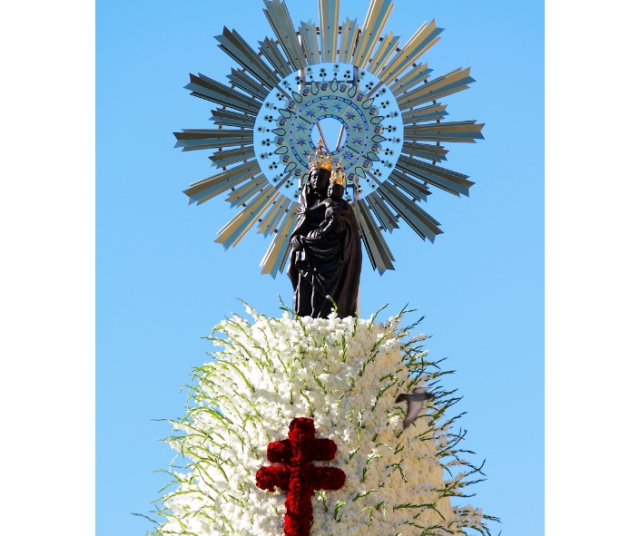The Virgen del Pilar , an iconic figure in Spain and throughout the Spanish-speaking world, holds a special place in this country's religion, history, and culture. This Marian dedication, associated with the city of Zaragoza, has been venerated for centuries and has become a symbol of devotion and unity for millions of people.
Origins and Legends
The rich history of the Virgen del Pilar is rooted in Christian tradition and in a fabric of legends that has endured over the centuries. The main account holds that in the first century AD, when the Apostle James was preaching in Hispania , the Virgin Mary appeared to him in a time of need. The apparition took place on a marble pillar, providing a tangible connection between the sacred and the earthly.
This legendary apparition marked the beginning of a devotion that would spread over the years and become an essential element of the religious and cultural identity of Zaragoza and all of Spain. The narrative of the apparition on a pillar is also a powerful symbol: the pillar represents the column of faith, holding the connection between believers and divinity.
The story of the Virgen del Pilar is further enriched by other legends that have endured over the generations. These stories often delve into the relationship between the Virgin and the inhabitants of Zaragoza, revealing details about how Marian devotion has affected the lives of ordinary people throughout history. The legends convey the spiritual importance of the Virgen del Pilar and the intimate connection that the faithful feel with her.
The Sanctuary of Our Lady of the Pillar
The sanctuary of Nuestra Señora del Pilar in Zaragoza is one of the most important pilgrimage sites in Spain and a center of Marian devotion. The current basilica, an impressive example of Baroque architecture, was built on the site where the apparition of the Virgin is believed to have taken place. The original column is in a chapel inside the basilica and is an object of veneration for the faithful.
Devotion and Celebrations
Devotion to the Virgen del Pilar is deep and rooted in Spanish culture. October 12, the day of the Virgen del Pilar, is celebrated with great fervor throughout Spain and in Spanish-speaking countries. Thousands of people attend the festivities in Zaragoza, where processions, masses and devotional acts are held in honor of the Virgin. The faithful also approach the pillar to touch it or place flowers as a sign of their faith and gratitude.
Cultural Significance and Unity
The Virgen del Pilar not only has religious significance, but is also a cultural and unifying symbol for Spain. His figure transcends divisions and connects people from different regions and backgrounds. Devotion to the Virgen del Pilar has been an important factor in cultural cohesion and Spanish identity over the years.
The Virgen del Pilar has been a constant source of inspiration for artists and writers throughout history. It has been depicted in paintings, sculptures, and other forms of art, capturing its spiritual presence and significance. In addition, the Virgen del Pilar has been mentioned in numerous literary texts and songs that explore her influence on people's lives.
Veneration in the Spanish-speaking world
The influence of the Virgen del Pilar transcends the borders of Spain and extends throughout the Spanish-speaking world. In every corner where the Hispanic community has left its mark, devotion to the Virgen del Pilar remains alive and vibrant. This Marian dedication has become a connection point for millions of people who share the language, culture and faith.
In Latin America, the veneration of the Virgen del Pilar has deeply rooted in the religious and cultural life of many nations. From Mexico to Argentina, passing through Colombia, Ecuador, Peru and beyond, the festivities in honor of the Virgen del Pilar are celebrated with enthusiasm and passion. These celebrations often reflect local traditions and the cultural particularities of each country, but all share a common thread of devotion to the Virgin.
Every October 12, the Spanish-speaking faithful gather in churches, cathedrals and sanctuaries to pay homage to the Virgen del Pilar. The processions, masses and veneration rituals are visible manifestations of the deep connection that people feel with the Marian devotion. Pilgrims and devotees come to these sacred places to express their prayers, thanks and requests, creating an atmosphere of spiritual communion and unity.
The veneration of the Virgen del Pilar has also found its way into the Hispanic communities that have established themselves in other parts of the world. From the United States to Europe and beyond, Spanish-speakers continue to carry their devotion to the Virgin with them. This not only strengthens their connection to their cultural roots, but also creates a bond between the various communities that share this faith and devotion.
